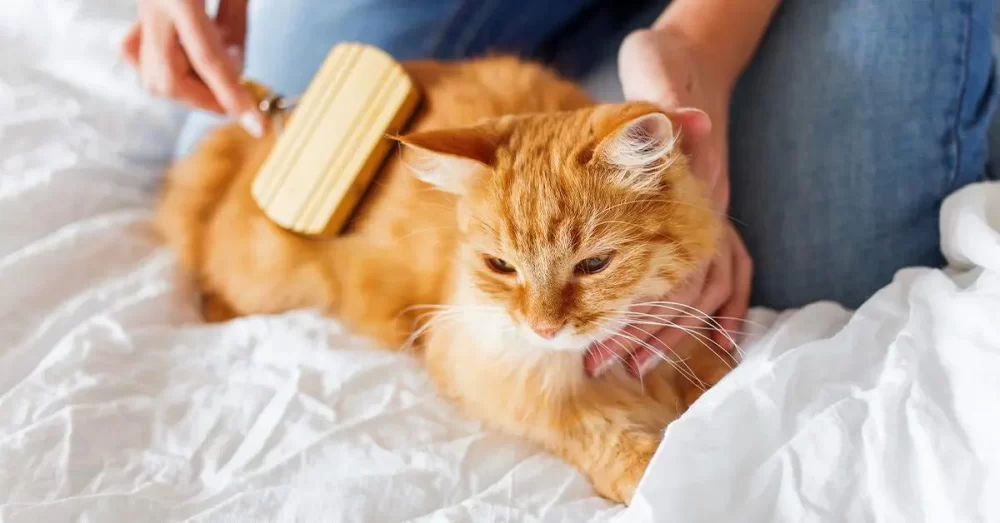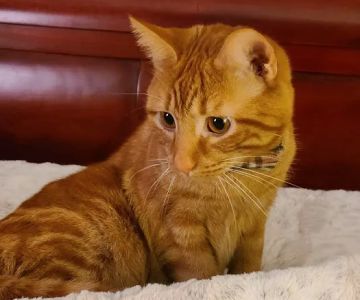Understanding Excessive Grooming in Cats
As a cat owner, you’ve probably noticed your feline friend spends a lot of time grooming themselves. Cats are naturally clean animals, and grooming is part of their daily routine. But what happens when grooming becomes excessive? If you find your cat obsessively licking or even pulling out their fur, you might be witnessing excessive grooming, a behavior that can indicate underlying issues. Here’s everything you need to know to understand and address this behavior.
What Is Excessive Grooming?
Excessive grooming occurs when your cat spends an unusual amount of time grooming itself. While daily grooming is normal, if your cat is licking or biting their fur non-stop, it could be a sign of something more serious. It's important to differentiate between routine grooming and behavior that’s problematic. Excessive grooming can lead to hair loss, skin irritation, and even the formation of sores or hot spots.
Why Do Cats Groom Excessively?
There are several reasons why your cat might engage in excessive grooming. Some of the most common causes include:
- Stress and Anxiety: Just like humans, cats can experience stress. Changes in their environment, such as moving to a new home, the arrival of a new pet, or changes in routine, can make them feel anxious. Grooming becomes a way for cats to comfort themselves and alleviate stress.
- Health Issues: If your cat is feeling unwell, they might use grooming as a way to cope. Skin infections, allergies, flea infestations, or even underlying conditions like arthritis can trigger excessive grooming.
- Boredom: Cats need mental stimulation and physical activity. If your cat isn’t getting enough exercise or stimulation, they might turn to grooming as a form of entertainment.
- Fleas or Parasites: Fleas, mites, and other parasites can cause intense itching and discomfort, leading to excessive licking or biting in an attempt to relieve the irritation.
- Hormonal Changes: In some cases, hormonal imbalances can cause your cat to groom excessively. This is often seen in cats that are not spayed or neutered.
Signs Your Cat's Grooming Is Excessive
Excessive grooming can present itself in several ways. Here are some signs to watch out for:
- Hair Loss: If you notice patches of hair missing, this is a clear indication that your cat is over-grooming.
- Skin Irritation: Redness, sores, or scabs on the skin are signs that your cat might be grooming too much and causing damage to their skin.
- Changes in Behavior: If your cat seems more irritable, withdrawn, or less active than usual, it might be because of the stress or discomfort caused by excessive grooming.
How to Address Your Cat's Excessive Grooming
1. Visit Your Veterinarian
If your cat’s grooming habits have changed suddenly or seem excessive, the first step is to take them to the vet. A veterinarian will help rule out any underlying medical conditions, such as skin infections, allergies, or parasites. They can also offer advice on how to manage stress or anxiety in your cat.
2. Reduce Stress and Anxiety
If stress is the cause of your cat’s excessive grooming, it’s essential to create a calm and stable environment. Here are some tips to help reduce your cat’s stress:
- Provide a quiet space for your cat to retreat to when feeling overwhelmed.
- Introduce new pets, people, or changes to the environment gradually.
- Use pheromone diffusers or sprays designed to help cats feel more relaxed.
3. Provide More Playtime and Stimulation
Boredom is a common cause of excessive grooming, especially in indoor cats. To keep your cat mentally and physically engaged, provide plenty of toys and opportunities for play. Interactive toys, scratching posts, and puzzle feeders can help redirect your cat’s attention away from grooming.
4. Maintain a Regular Grooming Routine
Believe it or not, regular grooming can help reduce the likelihood of your cat engaging in excessive self-grooming. Brush your cat regularly to keep their coat free from tangles and matting, which can cause discomfort. This will not only reduce the urge to groom but will also help you keep an eye out for any skin issues early on.
5. Check for Fleas or Parasites
If your cat is grooming excessively and you notice signs of itching or scratching, it could be due to fleas or other parasites. Make sure your cat is up-to-date with their flea treatment. Consult your vet for the best flea control plan.
6. Consider Behavioral Therapy
If medical causes are ruled out and your cat’s excessive grooming seems to be behavioral, consider working with a feline behaviorist. They can provide guidance on how to modify your cat’s behavior and help them develop healthier coping mechanisms.
Real-Life Story: How I Helped My Cat Overcome Excessive Grooming
When I first adopted my cat, Luna, I noticed she was constantly grooming herself. At first, I thought it was just a normal habit, but soon I realized she was licking her fur so much that she started losing patches of hair. Concerned, I took her to the vet, and after a thorough check-up, we found out that Luna had an allergy to a certain type of food. Once we switched her diet, the grooming subsided significantly.
But that wasn’t the only thing that helped. I also introduced new toys and games to keep her entertained, and slowly, Luna’s excessive grooming became a thing of the past. It was a long journey, but with the right approach, I was able to help my cat return to her happy and healthy self.
Final Thoughts
Excessive grooming in cats can be a sign of underlying health or behavioral issues, but it’s important to take a holistic approach when addressing the problem. From visiting your vet to providing a more stimulating environment, there are plenty of solutions that can help. If your cat’s grooming habits are becoming a concern, don’t hesitate to seek help from a professional. With the right care, your cat can enjoy a healthier, happier life.












